I must admit, I wasn’t all that excited when Ilford Ortho Plus was announced. I mean, I was enthused by the fact that Ilford had brought a new stock to 120 and 35mm – this sort of activity bodes fantastically well for the state of the industry – but on a personal level I just saw it as a specialist film that I probably wouldn’t shoot. Stupid Hamish, crap conclusion, I actually love it!
As regular readers will know I’ve been primarily shooting with Kodak P3200 as a black & white film of choice recently. I love that stuff, it’s so versatile and has a great look to it. Funnily enough though, after shooting it almost exclusively for quite some time now, I’ve developed a little bit of a desire to shoot something with a little bit less grain. I’ve got a stock of HP5 in the fridge, so have been expecting to find myself defaulting back to that at some point. That point never came though… perhaps because of my now overly-documented grumpiness…
What instead happened was a short email from Michelle at Ilford asking if I might like to try a couple of rolls of Ilford Ortho Plus. With nothing to lose, of course I agreed. A week or so later I had a plan to visit Paul from Analogue Wonderland. We were going to meet, have a bit of a chat on camera for my (very slow burning) YouTube channel and then go and take a few photos nearby. He’d not shot Ilford Ortho Plus yet at that point either, so it felt like a good opportunity for us both to give it a run.
When we first met and had a coffee in a little cafe near where he lives the sun was out, then as Sod’s law would have it, as soon as we started our way to the car the weather started changing. By the time we got to the area he wanted to go shooting it was raining, cloudy and very cold. Not exactly ideal weather for shooting an ISO80 film – especially as I’d elected to shoot a roll of 120 in my Makina.
Fortunately, it was just about light enough for me to shoot handheld at 1/60th and f/4 or 1/125 and f/2.8. Because I was freezing and actually shivering a fair amount, a lot of the photos were shot wide open. I mentioned this to really highlight the point that the aesthetic of the outcome really was as much, if not more of a product of circumstance than creative desire. In fact, walking around in the freezing cold, I was a little concerned that I was wasting the film on what would be largely out of focus or motion-blurry photos. It really was that cold and hard to concentrate…
As it turned out, the combination of wide open shooting, the tonality and sharpness of the film and the crap English weather would all add up to something a lot more special than I expected. Now don’t get me wrong, I’m not about to claim some sort of compositional genius here. Me and Paul actually joked a fair bit as we walked around about how we were just taking facsimiles of millions of other photos of lone trees and the like. But, nonetheless, what’s innate in this film’s character is still very evident, and as such I was actually quite blown away by the results I got… despite them not being the best photos I’ve ever taken.
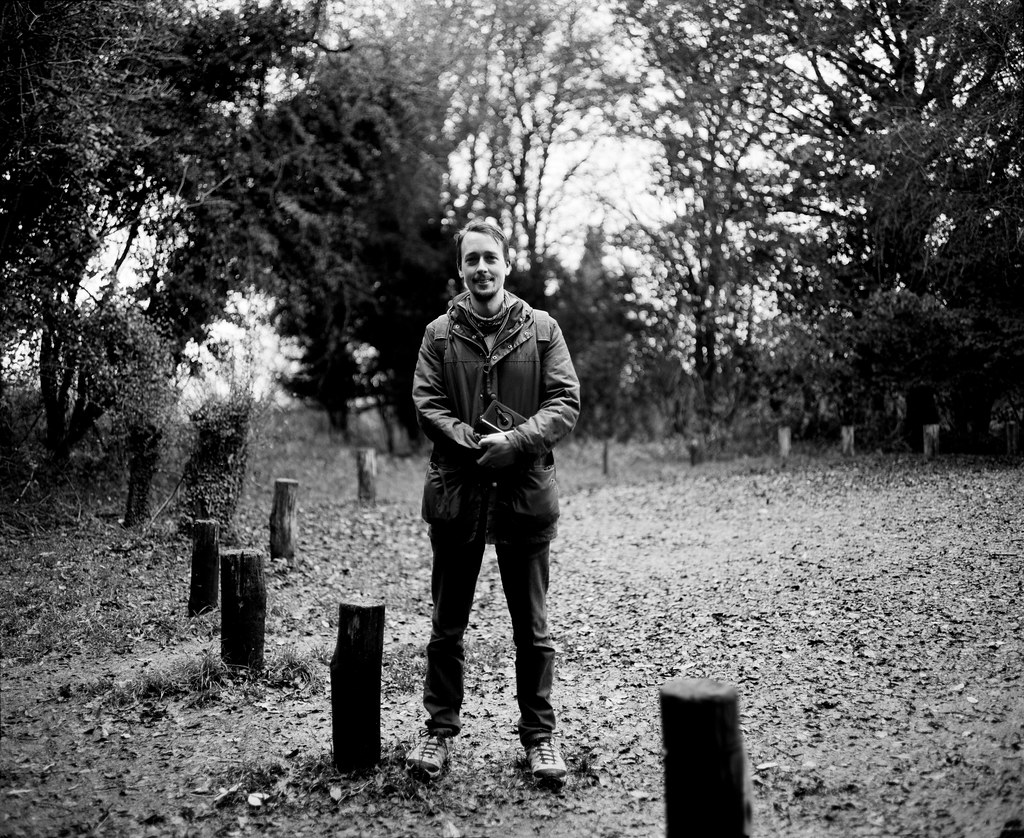
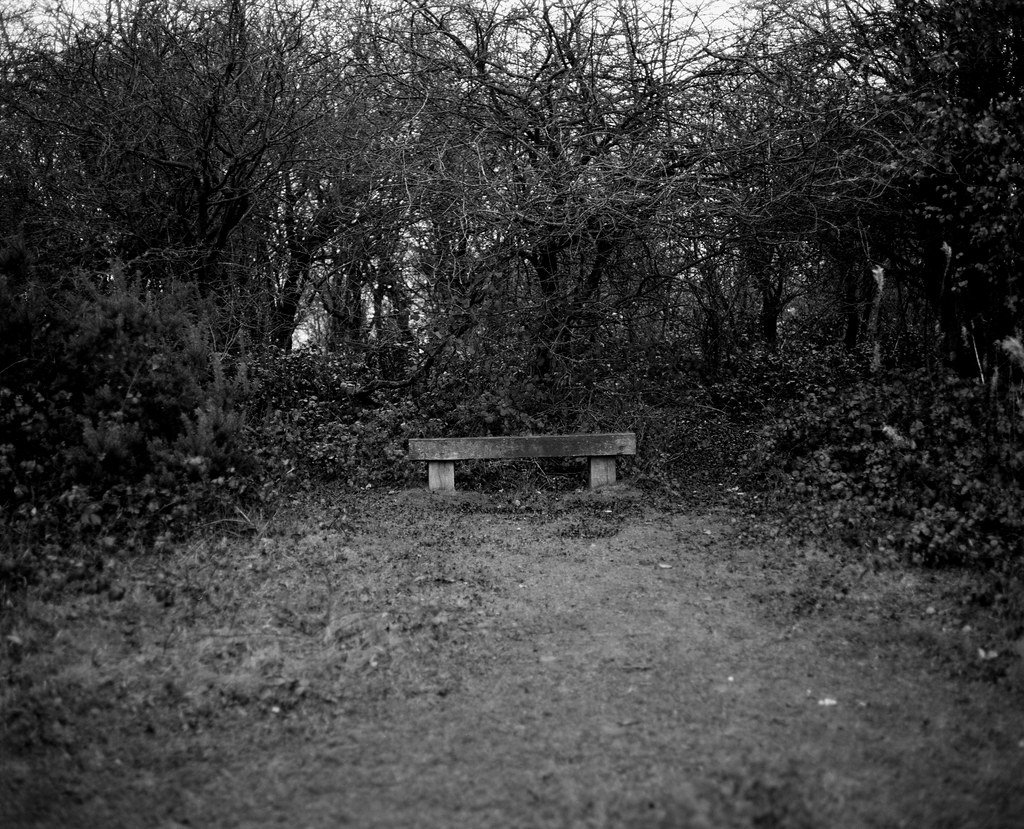
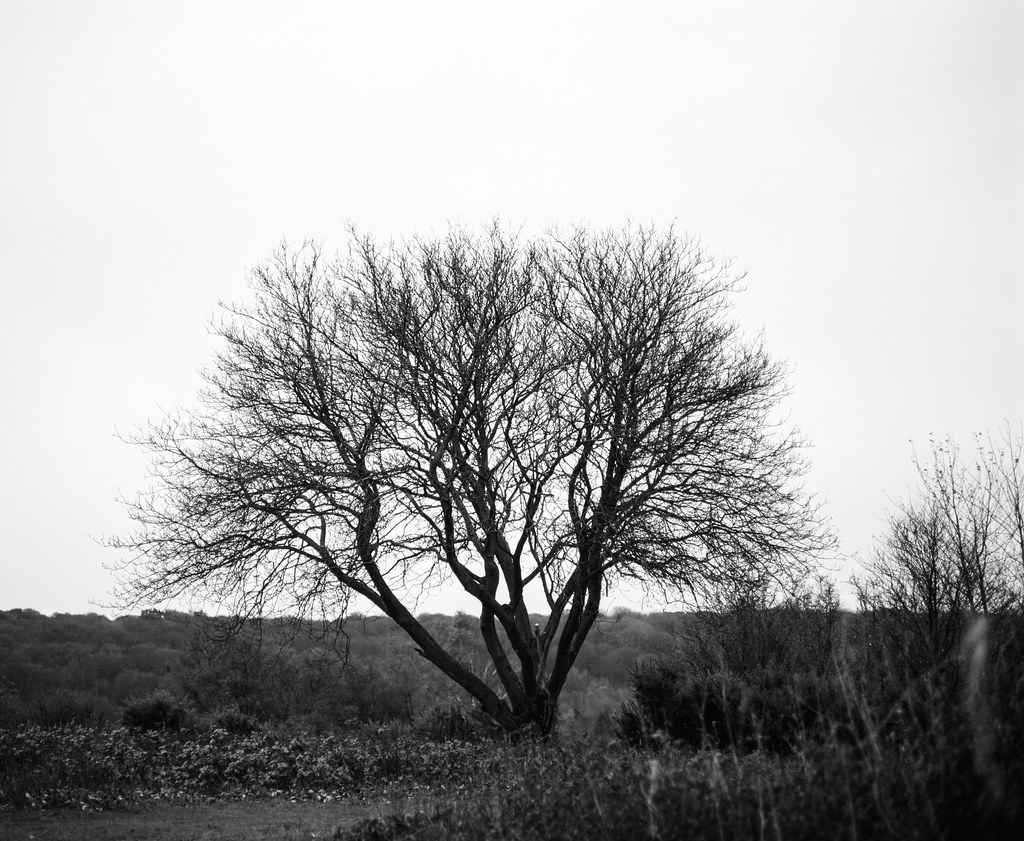
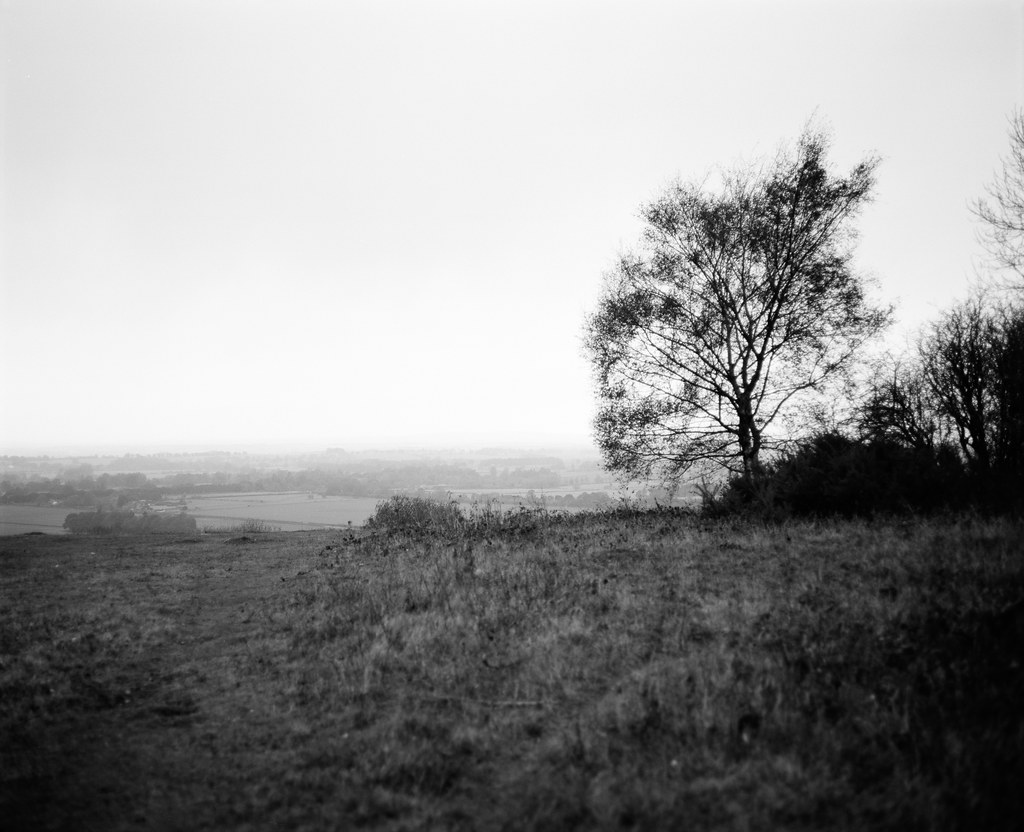
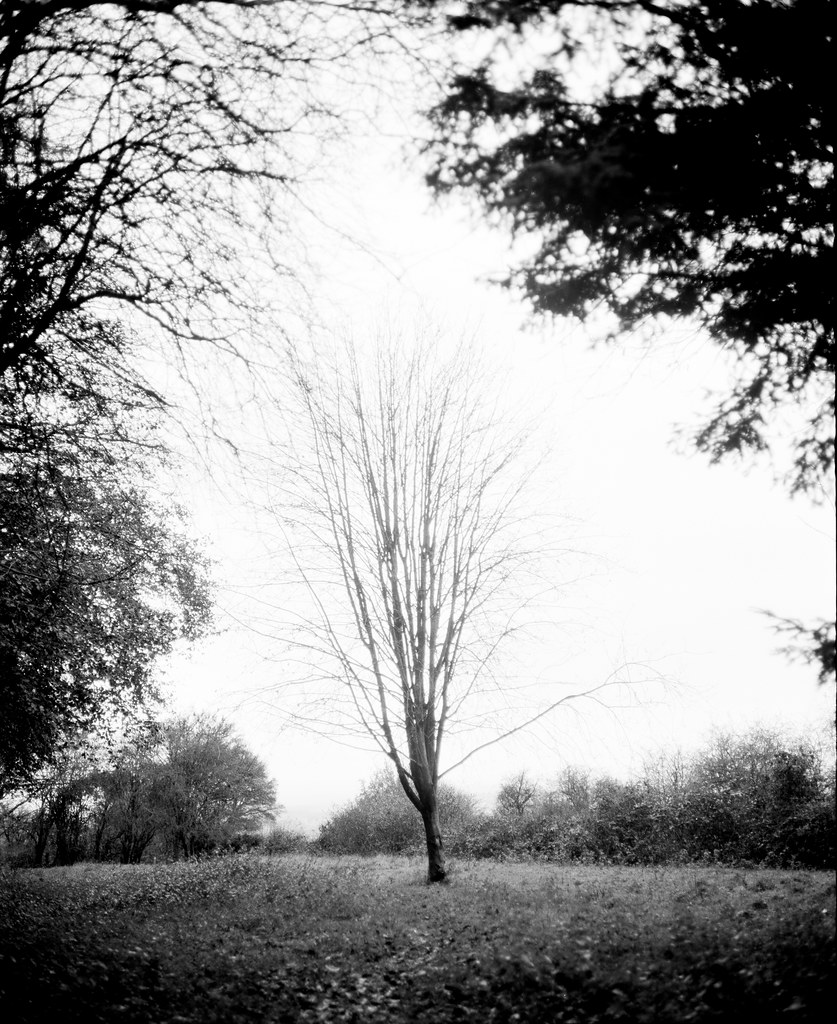
Spurred on by this success I decided I would shoot the roll of 35mm whilst out on a photo walk I organised in Worcester a few weeks later. I knew I was going to be taking a lot of photos that I’d taken before – I have walked the walk we all went on a lot of times with a camera before – but was still really interested to see how the results came out.
On this occasion I was shooting my Konica Hexar with the Minolta G-Rokkor 28mm f/3.5. This lens vignettes a bit, though I had a good feeling this might add something to the look of the images from this film – especially when shooting the industrial estate I had in mind. Again nothing new or world changing in these images, but I’m really pleased with how they came out.
I had both rolls developed by Duncan at SilverPan Film lab – I just went with his advice for the development process. He tells me they were developed in Perceptol for 8.30 minutes at 24 degrees in his Jobo. The negs were also scanned in such a way as to retain as much of the innate character of the film as possible, I also didn’t tweak them very much at all in Lightroom. Only a couple of adjustments to the horizon and a slight crop to couple of the frames of 120 and some very slight adjustments to contrast on the 35mm roll (mainly to combat my lackadaisical exposure). As such, these images should fairly strongly indicative of what you can expect from this film.
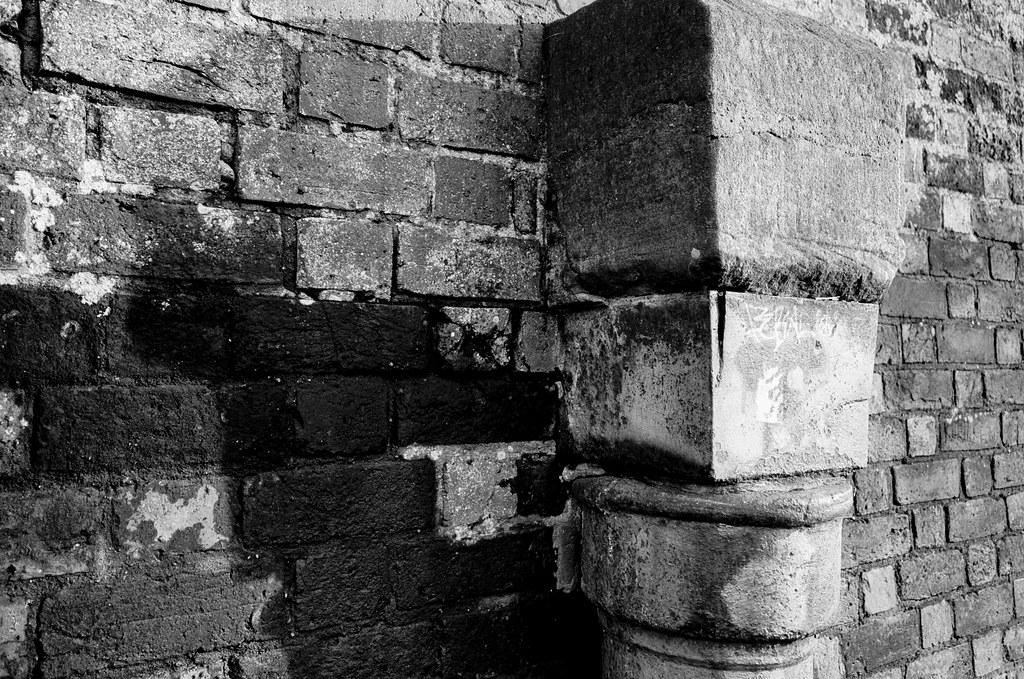
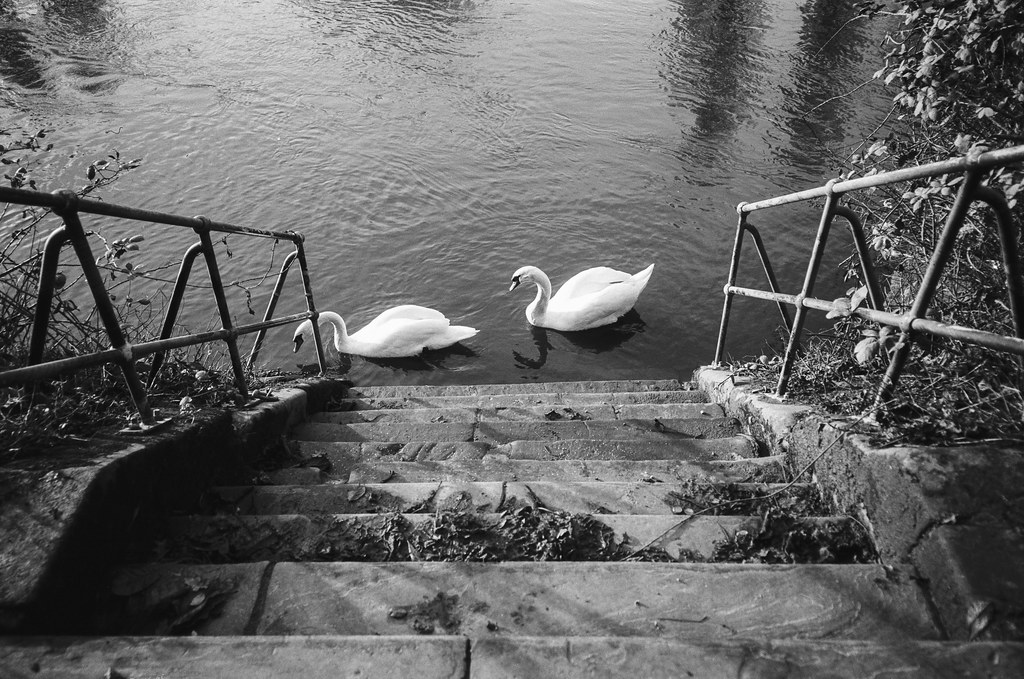
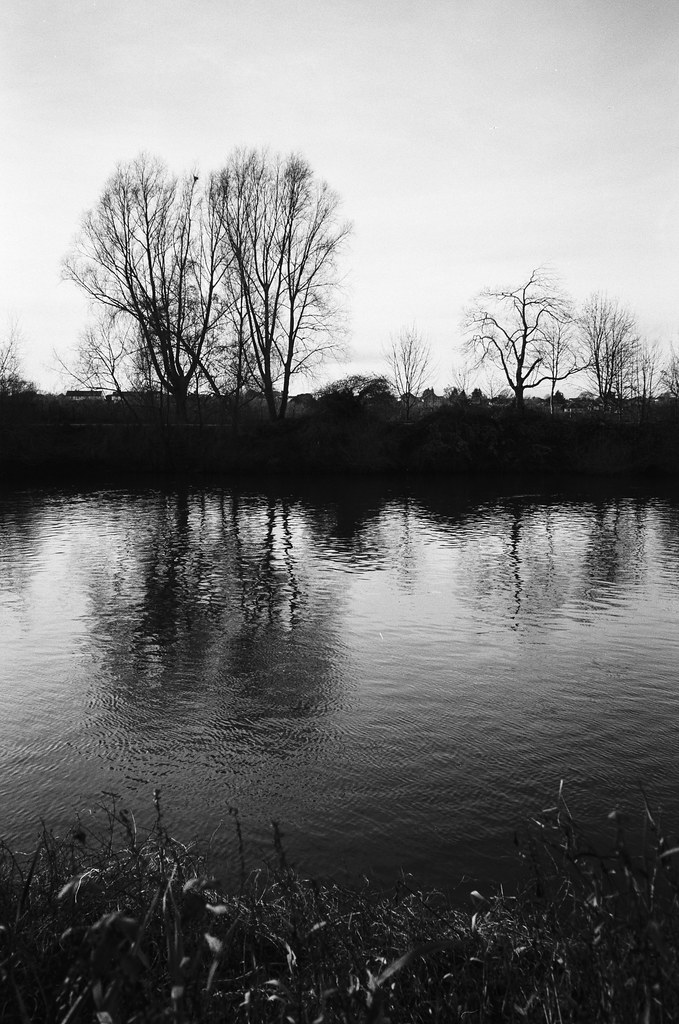
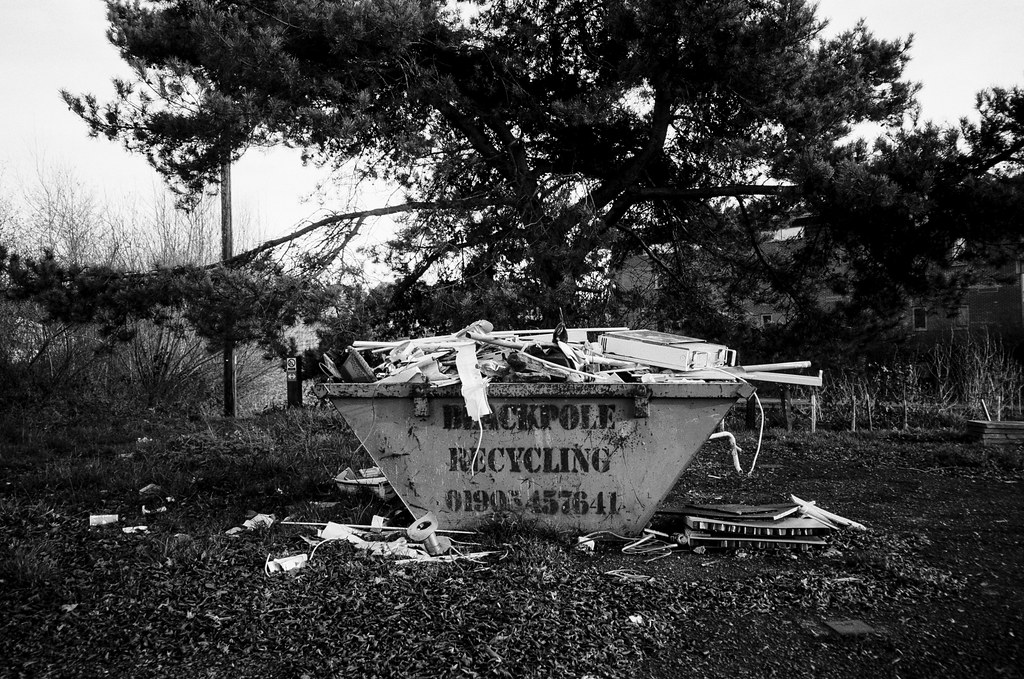
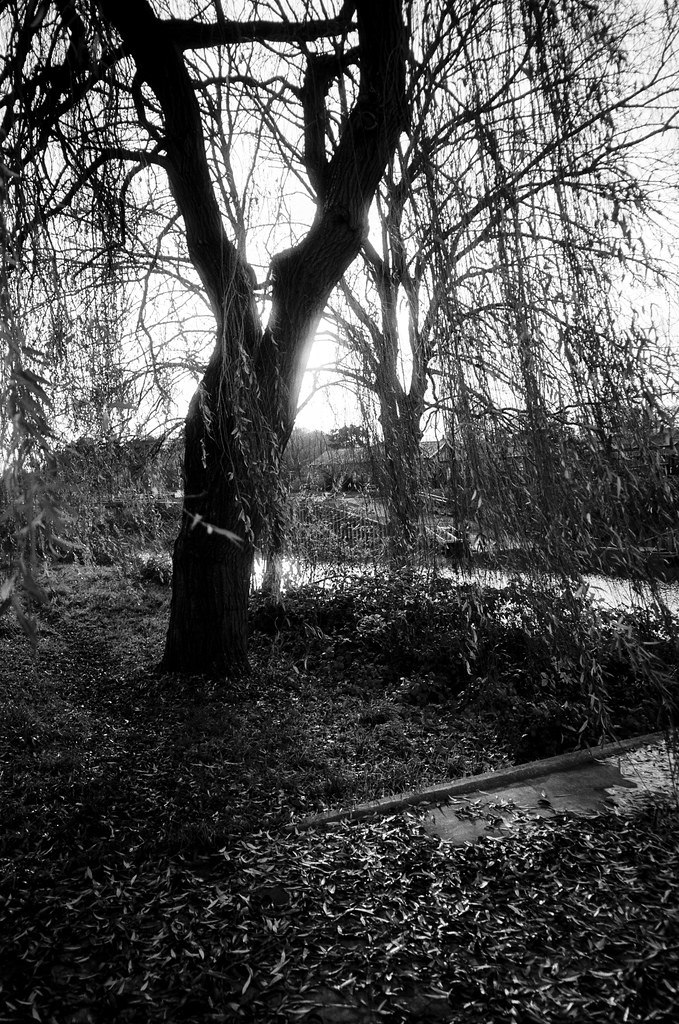
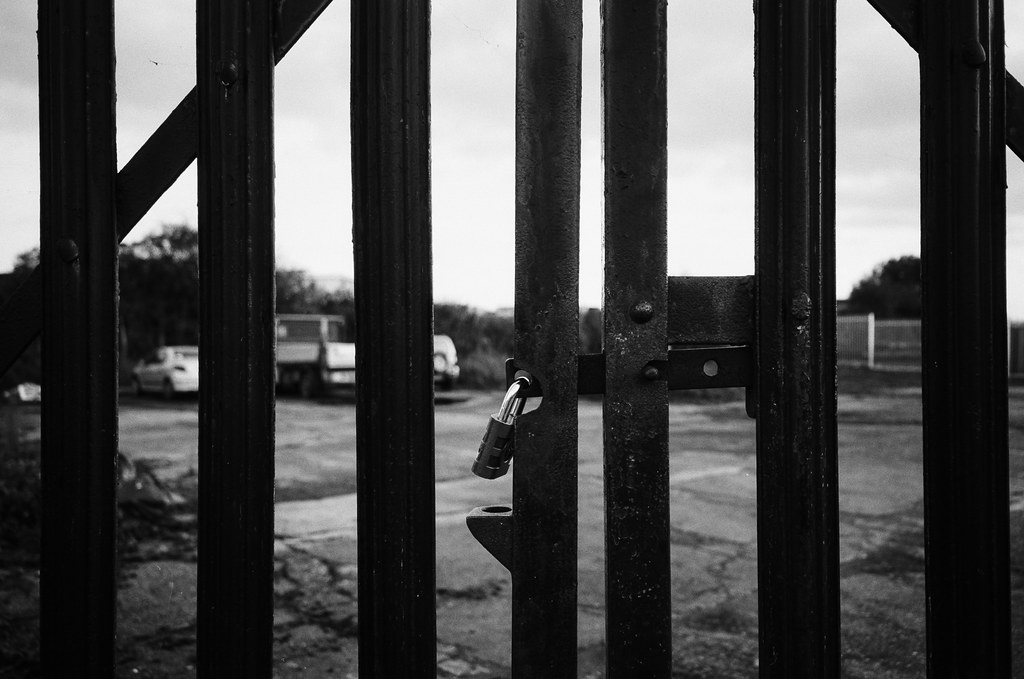
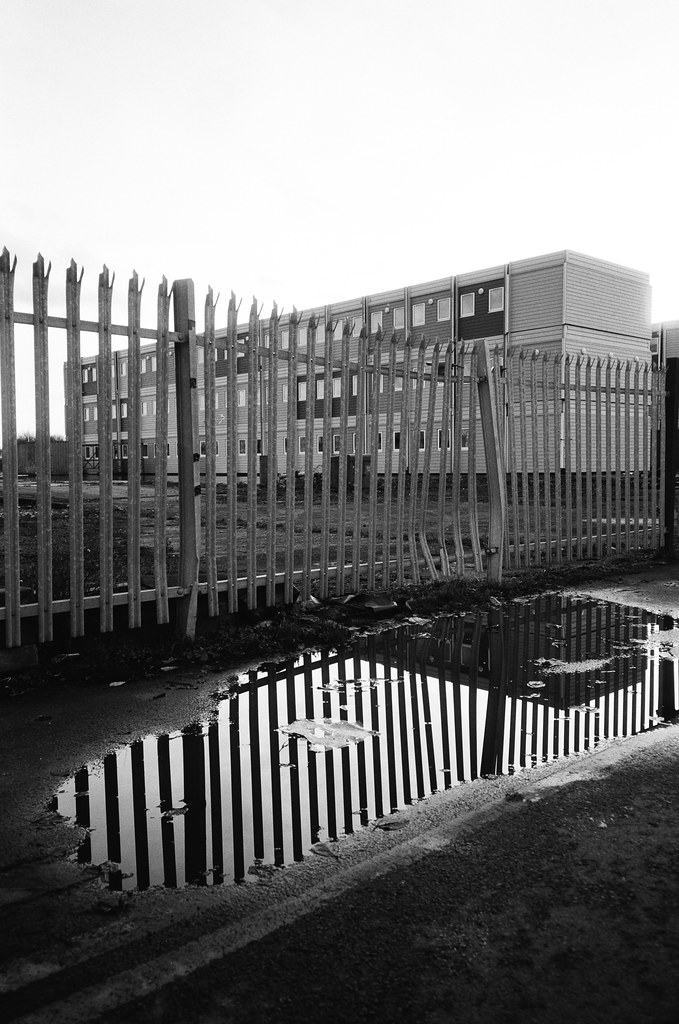
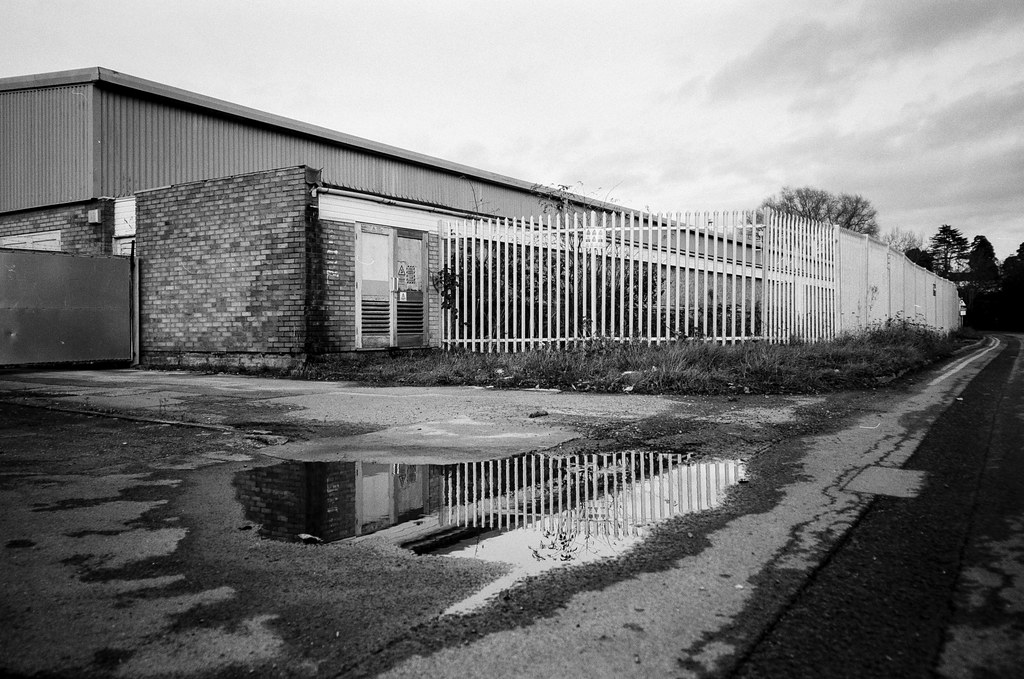
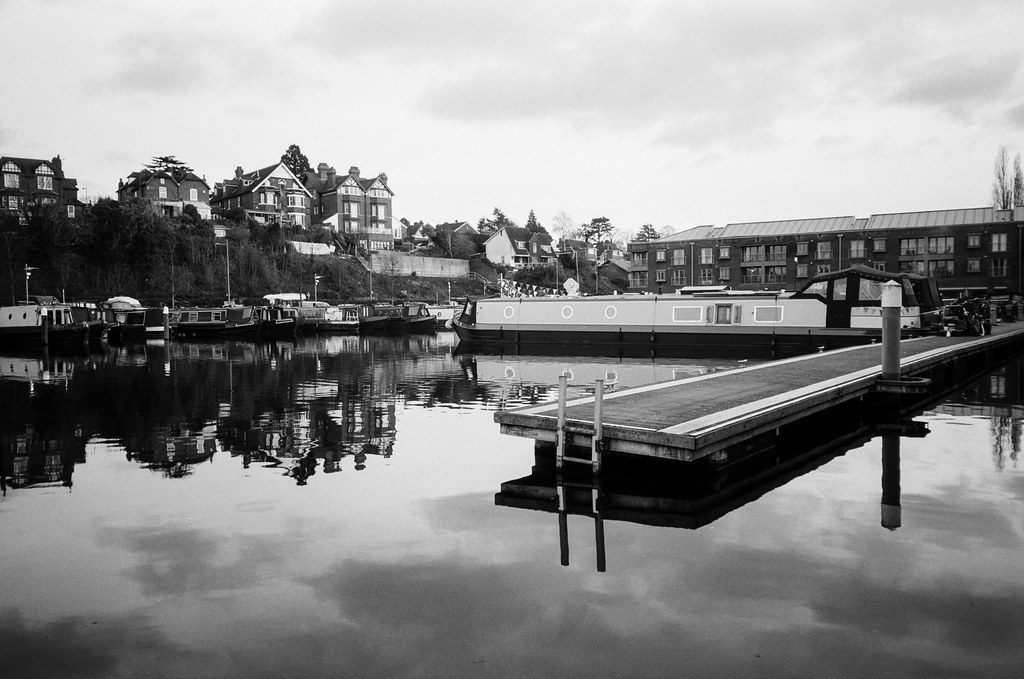
To my eye, and obviously this is based on two rolls both developed in the same chemical, there’s something here that I can definitely see me getting onboard with. The ISO80 film speed is a little bit of a limitation of course, but the gains in terms of the lack of grain and sharpness seem quite evident to me. With a little bit more thought, I could see myself getting into this film for landscape work. Sometime last year I started compiling some of my favourite bleak landscape images on my website in a bid to inspire me to capture more similar shots. It didn’t really work, but actually looking at those images, I could see this film working very well for that sort of style.
What’s particularly nice about the contrast is the way shadows seem to naturally fall off quite quickly, yet there still seems to be a lot of detail in the mid-tones. I often tweak my black and white images in this direction anyway, so having something that works like this naturally might work really well for me. But as I say, this is just gut response from two rolls, I have a way to go yet before properly getting to grips with. It’s definitely a film I will be shooting more throughout this year though. In fact, as soon as Paul gets more in stock I’ll definitely be ordering a 5 Pack of 120!
Words of thanks and recommendation
Finally, I just want to say a thanks to both Ilford Photo and Duncan from Silverpan Film Labs. Ilford supplied the film for this post, and Duncan is doing an excellent job at developing the film I shoot as well as giving me useful and insightful feedback – this being a service he offers to all of his customers.
If you want to buy this film, I also recommend Analogue Wonderland as my chosen film supplier. They stock Ilford Ortho Plus, but also supply something like 200 other films making the website interesting to explore as well as purchase from.
Share this post:









Comments
Trev on Ilford Ortho Plus Review – My First two rolls
Comment posted: 13/01/2020
Being newish to monochrome, I'm not quite sure what is meant by "shadows seem to naturally fall off quite quickly". Would you take a moment to clarify, please? What am I seeing? Ta.
Comment posted: 13/01/2020
Neil on Ilford Ortho Plus Review – My First two rolls
Comment posted: 13/01/2020
Had a mooch on your website also, really good. Cheers Sir.
Comment posted: 13/01/2020
Leo Tam on Ilford Ortho Plus Review – My First two rolls
Comment posted: 13/01/2020
Comment posted: 13/01/2020
Comment posted: 13/01/2020
Comment posted: 13/01/2020
Huss on Ilford Ortho Plus Review – My First two rolls
Comment posted: 14/01/2020
Analogue Wonderland sells that too. It is so sweet.
Comment posted: 14/01/2020
Recommended reading : Down the Road on Ilford Ortho Plus Review – My First two rolls
Comment posted: 18/01/2020
Roger B. on Ilford Ortho Plus Review – My First two rolls
Comment posted: 22/01/2020
Kent Teffeteller on Ilford Ortho Plus Review – My First two rolls
Comment posted: 14/01/2021
Jerry Scoby on Ilford Ortho Plus Review – My First two rolls
Comment posted: 13/09/2022
Anselm Grun on Ilford Ortho Plus Review – My First two rolls
Comment posted: 16/02/2023
Trying to do a lot of post editing here would be like trying to add chicken oxo cube into a home made chicken stock.
Ideally suited for landscape photography, the sensitivity to blue and green enables the film to capture brighter foliage the absence of red and orange sensitivity will also increase the contrast compared to panchromatic film
ISO 80 is ideal for early and natural light and has to be reduced for evening light ad tungsten work down to about 40 1 or to stop overexposure may be necessary to allow sufficient amount of light
the development times can easily be readjusted in the dark room in safe red light which the film cannot see.